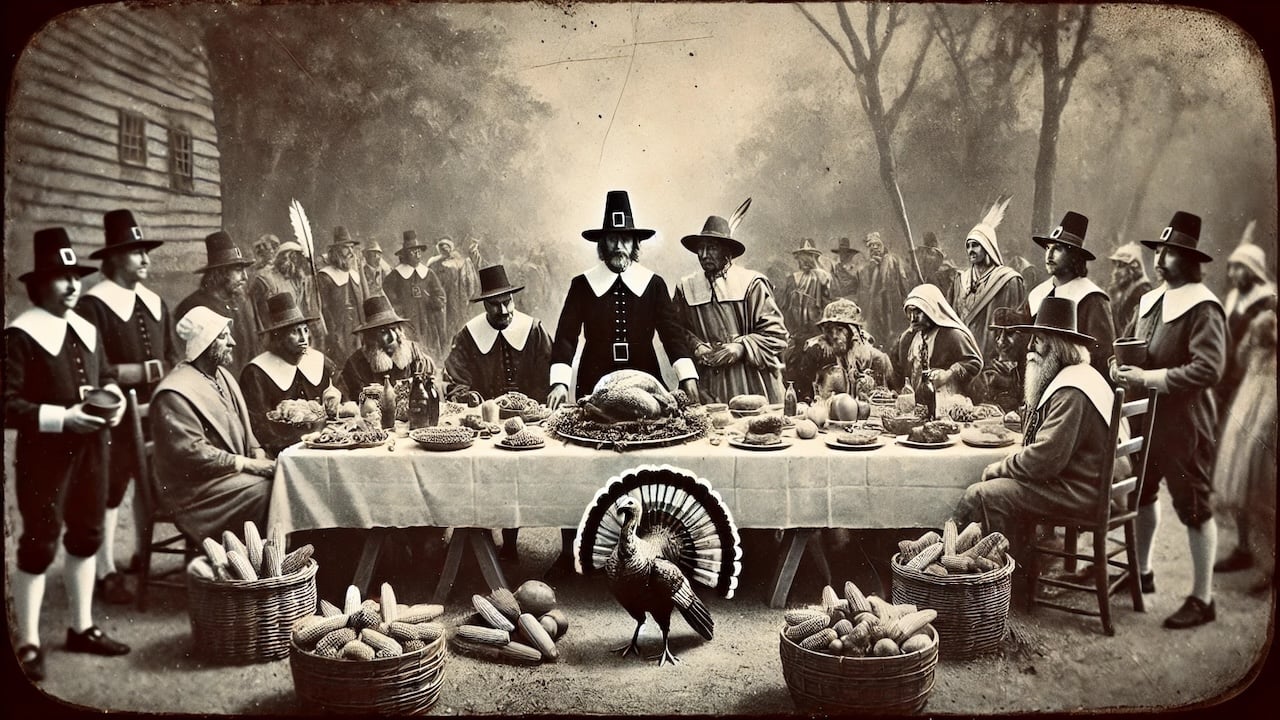(The Center Square) As Americans celebrate Thanksgiving this year, many believe the first thanksgiving was held in Plymouth, Massachusetts, in 1621. However, the first Thanksgiving celebration was held two decades earlier in an area south of El Paso in 1598, historians in Texas argue.
The first national Thanksgiving proclamation was issued by the Continental Congress two years after independence in 1778. President George Washington designated Thursday, November 26, 1789, as a day of public thanksgiving and prayer, in the first presidential Thanksgiving Proclamation.
“Whereas it is the duty of all Nations to acknowledge the providence of Almighty God, to obey his will, to be grateful for his benefits, and humbly to implore his protection and favor – and whereas both Houses of Congress have by their joint Committee requested me to recommend to the People of the United States a day of public thanksgiving and prayer to be observed by acknowledging with grateful hearts the many signal favors of Almighty God especially by affording them an opportunity peaceably to establish a form of government for their safety and happiness,” the proclamation states.
Nearly 100 years later, President Abraham Lincoln issued a Thanksgiving Proclamation in 1863, which began a yearly national Thanksgiving holiday still celebrated today.
The national celebration began nearly 200 years after the first thanksgiving celebration was recorded in Plymouth Colony in what would become Massachusetts Bay Colony. In 1620, English Separatists left for the New World seeking religious freedom. Their destination was the colony of Virginia but a storm blew them to Cape Cod, where they arrived in November 1620. Of the 102 on the Mayflower who sailed, only half survived the bitter winter. After failed attempts at farming and with the help of native Indians, the remaining survived and celebrated their first harvest in the autumn of 1621.
Their first recorded Thanksgiving Day celebration was in 1623 after rain fell ending a drought. In 1668, the Plymouth Colony Court declared Nov. 25 as a “sollemne day of thanksgiving,” praising the “goodnes of God to us in the continuance of our civill and religious liberties, the generall health that we have enjoyed, and that it hath pleased God in some comfortable measure to blesse us in the fruites of the earth.”
However, thousands of miles away and decades earlier, the first thanksgiving was held along the banks of the Rio Grande River in what is now Texas, historians argue.
The celebration wasn’t among Protestant British pilgrims who’d reached the new world by sea, but among Roman Catholic Spanish conquistadors, priests and early colonists who traversed across a desert. The celebration was also in April, not November.
Under the direction of King Phillip II of Spain, Spanish conquistadors led expeditions into lands that are now Texas, New Mexico, Arizona and California and established colonies.
“The largest and most famous of the expeditions was that of Juan de Oñate, who reached the south banks of the Rio Grande in April 1598. On April 30, 1598, the hungry and thirsty travelers celebrated a Thanksgiving Mass and feast to celebrate the survival of their expedition. The feast included game by the Spaniards and fish by the natives of the region. This significant date is considered to be the ‘First Thanksgiving’ celebrated in the present-day United States,” the El Paso Mission Trail Association says.
Oñate’s expedition included several hundred people, including soldiers, their wives and children, several priests and 7,000 head of livestock. They embarked on a 50-day journey from Santa Barbara in northern Chihuahua across a desert with a goal of reaching what is now Sant Fe, New Mexico. But they didn’t make it. Just days before they reached their destination, they ran out of food and water.
“Both animals and humans almost went mad with thirst before the party” reached the Rio Grande River, the Texas Almanac states. “After recuperating for 10 days, Oñate ordered a day of thanksgiving for the survival of the expedition.”
“Some historians call this one of the truly important dates in the history of the continent, marking the beginning of Spanish colonization in the American Southwest,” the almanac states. It points out that as Jamestown and Plymouth colonies were being established in the early 17th century, hundreds of towns in the New World had already been established by the Spanish in what are now four southwestern U.S. states.
The “Great Colonizer,” Oñate, “brought the Spanish culture (and ultimately, that of Mexico) to what would become the Great Southwest shaping its growth and the development of the area for generations,” an historical marker in El Paso County, “The First Thanksgiving,” reads. “These historic events preceded the English colonies on the Atlantic Seaboard, the French colonization of Canada, and the Dutch settlements in the Hudson River area by several years.”
Since 1989, residents in the small community of San Elizario, Texas, south of El Paso, celebrate what they consider the first Thanksgiving on April 30 every year. The El Paso Mission Trail Association sponsors the celebration, including a reenactment at the Chamizal National Memorial.

